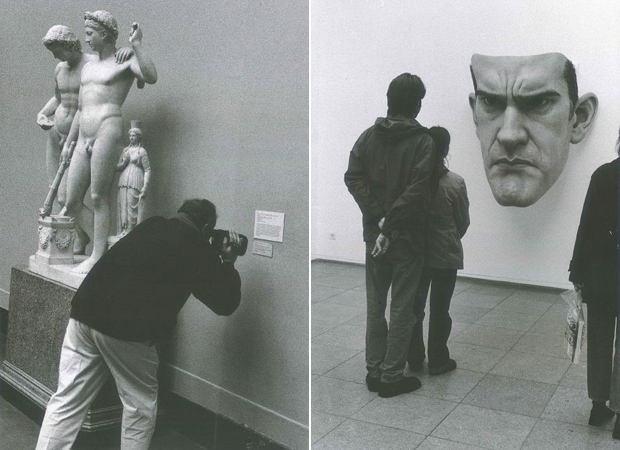
Why pick on the interpretation department?
Spare a thought for the people who write the wall texts in museums and galleries – it’s not easy
Maybe the first question to answer is exactly what is the interpretation department? It sounds rather Orwellian. Within almost every gallery or museum there exists a person or group of people whose job is to translate the intentions of the artist into the words that are then pasted on the wall for visitors to gawp at (or ignore) as they file round the space.
While it’s not a massive amount of text, the task is not an easy one. On one side you have the artist, fiercely defending the absolute artistic meaning and integrity of their work, on the other there’s the audience. This can comprise anyone and everyone from meathead 16-year-old boys backpacking across Europe or America, through to well-heeled retirees up from the beach house for a day of art. In the middle, the interpreter is expected to speak fluently a ‘language’ which chimes with all of them.
“The general impression among many living artists is that the interpretation department is there to ‘dumb down’ their artistic vision,” says White Cube and former Tate curator Craig Burnett. “Curators sometimes look down on them as meddling pseuds who prevent them from soaring to the great intellectual heights they would reach without these bureaucratic meddlers softening their art.”
 George Condo, Batman and Bunny (2005)
George Condo, Batman and Bunny (2005)One answer to the conundrum is to let the artists speak themselves, a method favoured in part by Ralph Rugoff, Director of the Hayward Gallery and curator of its current excellent George Condo show. “We do try to get quotes on the wall text from the artist. However, artists don’t always know everything that their work is about - a good work of art should surprise the artist too. But I think our emphasis might be on a tiny detail or background information that will help the viewer see something there they might not notice or that might give some insight into what the artist was thinking. We try to steer away from curatorial interpretation. If you’ve done a good job curating that information should almost be self-evident.”
Rugoff’s view would seem to be borne out by Canadian photographer Jeff Wall who once commented that when he was younger he tended to believe that all the intentional things he put into a photo were important but that as he grew older they seemed "trivial compared to the unconscious elements" present in his work.
 Jeff Wall, After 'Invisible Man' by Ralph Ellison, the Prologue (1999–2000)
Jeff Wall, After 'Invisible Man' by Ralph Ellison, the Prologue (1999–2000)It’s maybe not surprising then that some artists would actually much rather there wasn’t anything at all on the wall – or, in some cases it seems, be better off if there wasn’t anything. One curator who’s worked in several big art institutions told Phaidon “An artist who I won’t name did an interview with a curator by email. The language was horrid - barely literate. The artist was striving to push certain intellectual credibilities and there was a tension there.” What was written wasn’t dumbing down because there really wasn’t anything intelligent this artist was saying in the first place.”
Art In America, Flash Art and New York Times writer Aimee Walleston thinks the disconnect comes when the artist or gallery visitor perceives the interpretation to be that of the artist other than just what it is – some words by a writer. “I don't consider what I write to be interpretive of the artwork or of an artist's intention,” she says. “I can't say what an artwork means to anyone other than myself. I have studied art history, criticism and theory, but I do not consider myself an expert in the way that perhaps an art historian might. I am a writer first and foremost, and I chose art as my primary subject matter because it is infinite. If I'm interpreting anything, I guess it would be my own experience as a human being relating to art and to artists.”
Perhaps the best approach is the most obvious one - reduce the interpretation and up the information. “At White Cube when I write I try to be very deadpan,” says Burnett. “I did that for Christian Marclay’s The Clock. I knew the work was remarkable and it made a huge splash because it was a masterpiece. But when I wrote the description I made it super deadpan so that everyone thought that a 24-hour clock would be just that. As a result, the common response I got was, ‘Wow! I just wasn’t ready for what I saw.’” Maybe sometimes less is actually more.